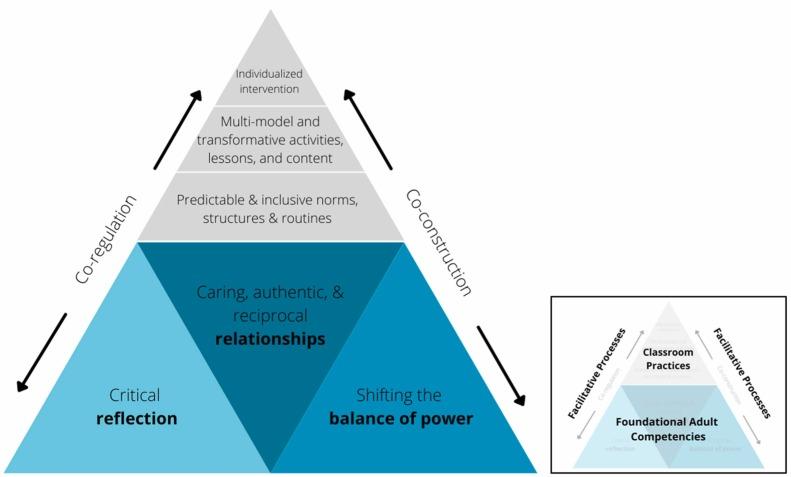Measuring the Impact of SEL Programs: Proven Strategies for Assessment and Success
Social and Emotional Learning (SEL) has emerged as a pivotal component of modern education, promoting well-being, emotional intelligence, and positive behavioral outcomes among students. However,as more schools and districts adopt SEL initiatives,a pressing question arises: How can we effectively measure the impact of SEL programs? Understanding the value of SEL assessment not only ensures accountability but also drives the continuous betterment of programs. In this article, we discuss proven strategies for assessing the effectiveness of SEL initiatives, benefiting educators, administrators, and policymakers alike.
What is SEL and Why Measure It’s Impact?
SEL programs equip students with essential life skills such as self-awareness, self-management, responsible decision-making, relationship building, and social awareness. While the benefits of SEL are well-documented, objective metrics are necessary to validate outcomes, secure funding, and communicate results to stakeholders.By measuring SEL program impact, schools can:
- Identify areas of strength and improvement
- Ensure that initiatives align with desired outcomes
- Provide data-driven evidence for stakeholders
- Support grant applications and long-term funding
- Boost student engagement and staff buy-in
Key Strategies for Measuring the Impact of SEL Programs
Effective evaluation of SEL initiatives requires a comprehensive, adaptable approach. Below are proven strategies educators and administrators can use to ensure robust SEL assessment and successful program outcomes.
1. Define Clear Goals and Outcomes
- Collaborate with stakeholders to establish realistic,measurable objectives.
- align goals with recognized SEL frameworks (e.g., CASEL’s five competencies).
- Develop specific, actionable outcomes such as improved attendance, decreased disciplinary referrals, or enhanced student self-regulation.
2. Use Validated SEL Assessment Tools
- Administer research-backed surveys, such as the DESSA or Panorama Social-Emotional Learning Survey.
- Utilize performance-based assessments and standardized rubrics to measure competencies.
- Combine self-assessments (completed by students), teacher ratings, and peer evaluations for a 360-degree perspective.
3.Collect Quantitative & Qualitative Data
- Analyse school data: attendance rates, behavior incidents, academic performance.
- Conduct focus groups and interviews with students, teachers, and families to gather insights into SEL program effectiveness.
- Incorporate regular classroom observations to evaluate behavioral and emotional development.
4. establish a Baseline and Monitor Progress Over Time
- Establish a pre-implementation baseline for SEL competencies and related indicators.
- Track progress through periodic assessments (quarterly, biannual, or annual).
- Adjust intervention strategies based on data trends and feedback.
5. Engage Stakeholders in the Evaluation Process
- Include teachers, counselors, students, and families in each step of assessment.
- Share findings transparently and celebrate successes collaboratively.
- Provide professional development to improve assessment literacy among staff.
6. Leverage Technology for Data Collection & Analysis
- Use dedicated SEL platforms (e.g., Kickboard, Second Step) to streamline evaluation and reporting.
- Utilize WordPress or LMS plugins to automate survey distribution and data aggregation.
- Create customizable dashboards to visualize progress and results.
Benefits of Effective SEL Program Assessment
When schools invest in measuring the impact of SEL programs, they reap significant rewards beyond compliance or reporting obligations. Here are some notable benefits:
- Enhanced Program Effectiveness: Continuous feedback helps refine instructional methods and curriculum,resulting in higher student achievement.
- Increased Student Engagement: Monitoring SEL progress fosters a sense of belonging, motivating students to participate and perform better academically.
- Data-Driven Decision Making: Administrators and educators gain valuable insights to guide resource allocation and instructional priorities.
- Long-Term Success: Well-assessed SEL programs support positive school culture, better career readiness, and long-lasting personal growth.
Case Studies: Successful SEL Program Assessment
Real-world examples underscore the transformative power of effective SEL program measurements. Consider these case studies:
Case Study 1: Urban Elementary School
An inner-city elementary school implemented CASEL-aligned SEL curriculum and utilized the DESSA tool for pre- and post-assessment. Results showed a 35% reduction in discipline referrals and a 20% improvement in staff-reported social skills. Insights gained led to additional staff training and increased parent involvement.
Case Study 2: Suburban Middle School
This school integrated the Panorama SEL Survey with academic and attendance data. Over two years, the school observed improved school climate scores and a measurable increase in students’ self-management skills. The school attributed these gains to continuous data review and targeted SEL interventions.
Practical Tips for SEL Assessment Success
Success in SEL evaluation is grounded in intentional design and community involvement. Here are some best practices for educators and administrators:
- start Small, Scale Up: Pilot assessments in select classrooms before implementing school-wide.
- Focus on Growth, Not Just Outcomes: Recognize and celebrate small steps in SEL competency improvement.
- Respect Student Privacy: Ensure all data collection complies with FERPA and district policies.
- Communicate Regularly: keep all stakeholders informed of progress and challenges.
- Offer Support: Provide access to resources and guidance for educators implementing SEL assessments.
Challenges in Measuring SEL and How to Overcome Them
SEL assessment comes with its unique set of challenges, including subjective perceptions, diverse student populations, and limited resources. Address these challenges by:
- Using multiple evaluation methods to triangulate data and minimize bias.
- Investing in professional development for staff, ensuring a consistent approach to assessment.
- Adapting tools to fit the cultural and linguistic needs of all learners.
- seeking community partnerships to supplement resources and share best practices.
Conclusion: Ensuring SEL Program Success through Robust assessment
Effective measuring of Social and Emotional Learning programs is essential for promoting meaningful outcomes and long-term growth for students and schools. By implementing clear goals, validated tools, data-driven processes, and engaging all stakeholders, educators can ensure not only the accountability of SEL programs but their ongoing success. Whether you’re developing a new initiative or refining an existing one, prioritize SEL assessment strategies—they’re the key to nurturing the next generation of resilient, empathetic, and successful individuals.
By following these strategies and tips, your school or district will be well-equipped to measure, analyze, and optimize the impact of SEL programs, enabling every student to reach their full potential.

